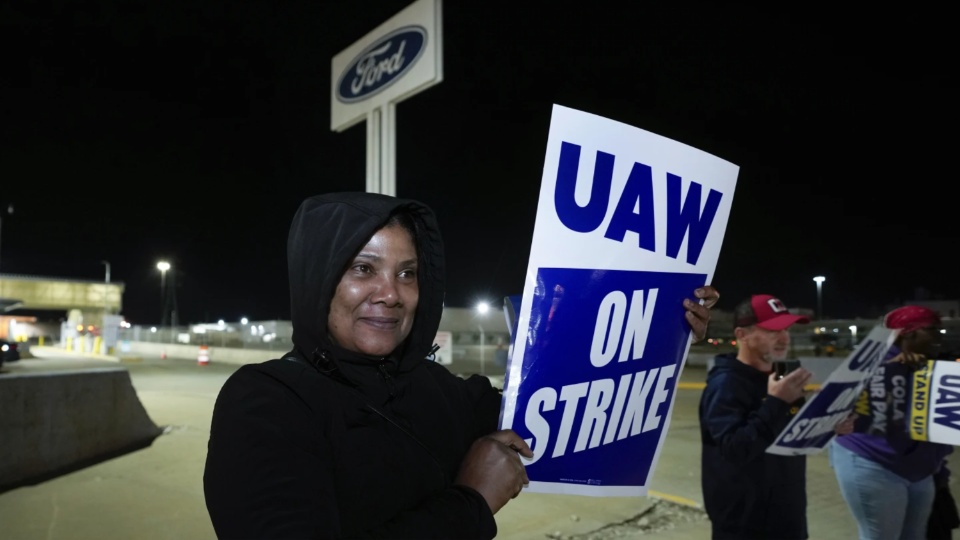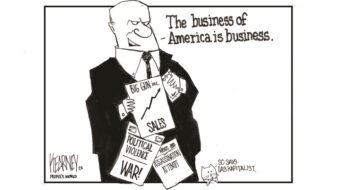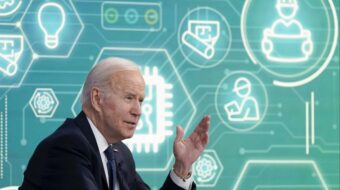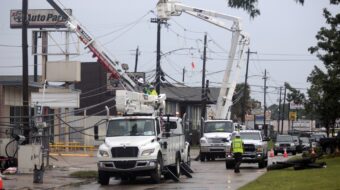
Hot Labor Summer is turning into hotter labor fall. The United Auto Workers are now on strike against the Big Three automakers.
Ford, General Motors, and Stellantis (Chrysler and Jeep) have presented their latest offers, including a 9 or 10% raise for most workers, more paid time off, and increased benefits. The union has called both offers “insulting.”
Why is the United Auto Workers taking such a hard line in its negotiations with America’s Big Three automakers?
Five big reasons:
- First is the companies’ outsized profits. The Big Three have made $250 billion over the last decade, $21 billion in the first six months of 2023 alone. That’s because of high pent-up demand for autos after the pandemic along with higher-than-normal consumer savings, with the result that consumers have been willing to shell out lots of money for new cars—prices up 30% in the last four years alone—while the costs of making cars (the biggest one being labor) have remained relatively low.
- Second, CEO pay at the Big Three is out of sight. Ford’s CEO pulled in $21 million last year. The CEO of Stellantis got $24 million. GM’s CEO, Mary Barra, got a whopping $29 million in 2022 (and over $200 million during the last nine years). Overall, CEO pay rose 40% over the last four years. And that’s not counting all the other executive salaries under the CEOs that have been ratcheted upward as CEO pay has gone through the roof.
- Third, the UAW’s 350,000 unionized auto workers have largely been excluded from the fruits of this prosperity. Over the last four years, their wages have risen only 6%.
- Fourth is the two-tier wage system that most autoworkers still labor under, which pays new hires substantially less than old ones. Over time, this has meant that the typical autoworker has lost ground. The two-tier system was inaugurated following GM’s 2009 bankruptcy and massive taxpayer-supported bailout. It was supposed to be temporary, but it’s become a permanent fixture—and a permanent thorn in the side of autoworkers.
- Fifth is the emergence of another two-tier system: The Big Three have been quietly siting new plants to supply batteries for electric vehicles in non-union states. (The Biden White House hasn’t helped. It recently announced a $9.2 billion Department of Energy loan guarantee to Ford Motor Co. to help build a massive battery plant in Tennessee—a so-called “right-to-work” state. Unfortunately, the loan contains no language requiring Ford or its joint venture partner, South Korea’s SK On, a unit of a Korean chemical company, to ensure union involvement.)
UAW officials are correct to worry that Ford, GM, and Stellantis will use such battery plants to do end runs around the union. After all, parts suppliers now make parts that the companies once manufactured themselves—but many are doing so with lower-paid, non-union workers.
The two sides are far apart. The UAW wants a 46% wage increase over four years (in line with the increase in CEO pay over the last four), a 32-hour work week for 40 hours’ pay, cost-of-living adjustments, defined benefit pensions and retiree health care for all, and more paid time off.
So far, as I’ve noted, GM and Ford have offered to come up with small fractions of these demands.
Huge profits. Humongous executive pay packages. Years of low pay for hourly workers. The continuation of two-tier wages. And the emergence of even more two-tier wages: Put this all together and what do you get? The likelihood of a long strike.
How long? The union has $825 million in its strike fund and will pay $500 per week to each of its striking members. Were all of its 146,000 members to go on strike, the strike fund would run dry in just under three months. That’s why the UAW is striking a few individual plants to start. This would hurt the automakers but allow the UAW to continue the strike for more than three months, if necessary.
Will a long strike hurt the U.S. economy? Somewhat. A three-month strike could take about $6 billion out of the economy. Will it hurt Biden? (This is the first question I get from the media.) I doubt it. He’s more pro-union than any president since Lyndon Johnson and strong unions mean higher wages, which are good for workers and the economy. (Note, the UAW hasn’t yet endorsed Biden.)
For all the reasons mentioned above, I think a strike is justified. Don’t you?
>>> READ MORE PEOPLE’S WORLD COVERAGE OF THE UAW STRIKE.
We hope you appreciated this article. At People’s World, we believe news and information should be free and accessible to all, but we need your help. Our journalism is free of corporate influence and paywalls because we are totally reader-supported. Only you, our readers and supporters, make this possible. If you enjoy reading People’s World and the stories we bring you, please support our work by donating or becoming a monthly sustainer today. Thank you!












Comments